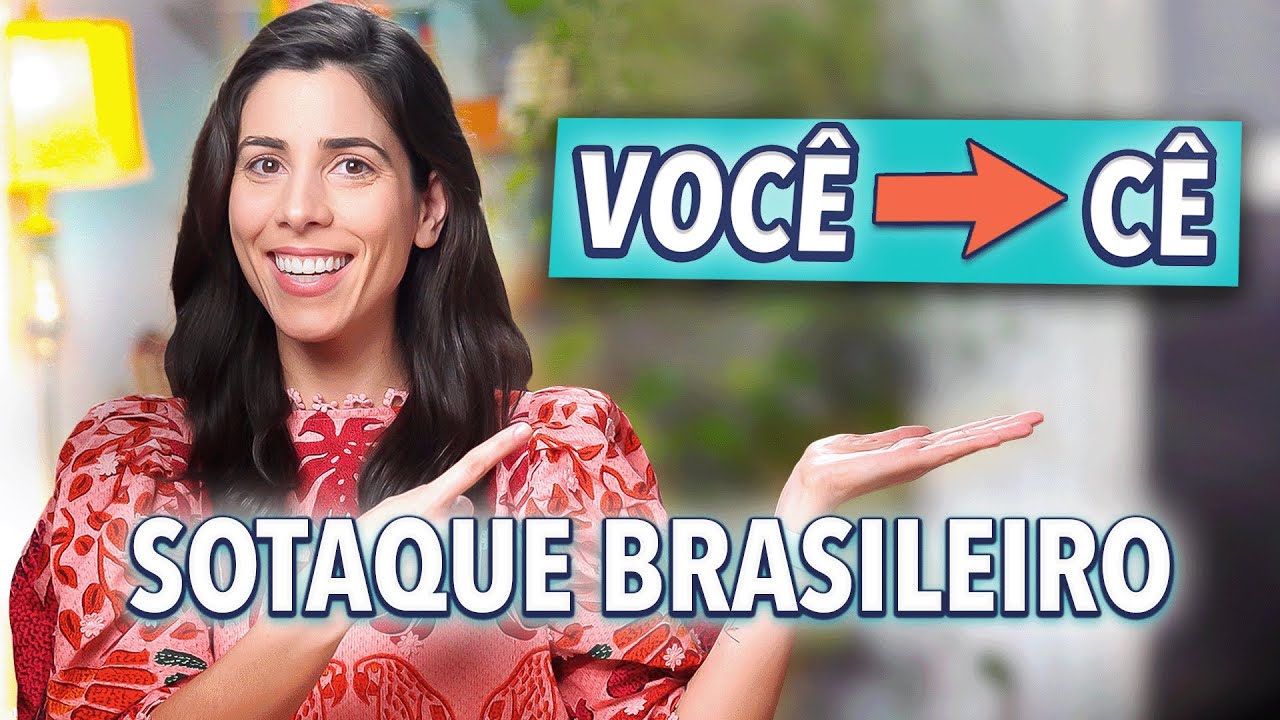Join the Speaking Brazilian YouTube Club to have access to the transcript of this video and many other videos.
Would you like to speak Portuguese like a native speaker?
In this lesson, you’ll learn how to link words to improve your Brazilian accent.
Since this is a pronunciation lesson, we recommend watching the video and repeating the words and sentences aloud in order to practice.
Linking words. What does that mean?
What we call linking is the natural process of connecting one word to another within a sentence.
Linking words in Portuguese isn’t mandatory, but every Brazilian does it. For this reason, it can sometimes be hard to understand what Brazilians are saying.
We connect one word to another all the time in spoken language, usually without even knowing we are doing it.
Now I will teach you three very common ways to link words in Brazil.
1. When a word ends in a consonant S and the following word begins with a vowel, we can link the two words, and the letter S should be pronounced like a Z.
For example:
- Standard Form: – Todos os homens. (All the men.)
- Linking the words*: Todo-zo-zomens. (All the men.)
*Since the letter “h” is silent, phonetically, the word “homens” starts with the vowel “o.”
- Standard Form: – Estamos animados. (We are excited.)
- Linking the words: Estamo-zanimados. (We are excited.)
- Standard Form: – Todos os anos. (Every year.)
- Linking the words: todo-zo-zanos. (Every year.)
- Standard Form: – Todas as semanas. (Every week.)
- Linking the words*: toda-za-semanas. (Every week.)
*Note that we link the words “as semanas” (the weeks) because one word ends in S and the next word starts with S, so we only hear one phoneme.
2. When a word ends in a consonant R and the following word starts with a vowel, we can link the two words, and the letter R should be pronounced how it normally would be between two vowels.
For example:
- Standard Form: – Vou comprar uma bolsa. (I’m going to buy a bag.)
- Linking the words*: vou compraruma bolsa. (I’m going to buy a bag.)
- Linking the words*: vô comprá uma bolsa (I’m going to buy a bag.)
*Note that the words “comprar uma” sound like they are just one word.
*Depending on the accent, some people would phonetically reduce the letter R in place of linking the words
- Standard Form: – O amor é lindo. (Love is beautiful.)
- Linking the words: o amoré lindo (Love is beautiful.)
- Standard Form: – Gosto da cor azul. (I like the color blue.)
- Linking the words: gosto da corazul (I like the color blue.)
3. When a word ends with a vowel similar to the vowel at the beginning of the following word, we can link the two words.
For example:
- Standard Form: – Todo o mundo. (Everyone.)
- Linking the words: todomundo. (Everyone.)
- Standard Form: – Ele me ignorou. (He ignored me.)
- Linking the words: ele m’ignorou (He ignored me.)
- Standard Form: – Uma abelha me picou. (A bee stung me.)
- Linking the words: umabelha me picou (A bee stung me.)
- Standard Form: – Gosto de ir ao Brasil. (I’d like to go to Brazil.)
- Linking the words: gosto dirao Brasil (I’d like to go to Brazil.)
That’s it, everyone! Now you know how to link words in Portuguese.
I hope you enjoyed this lesson!
Até logo!
Speaking Brazilian School Team


